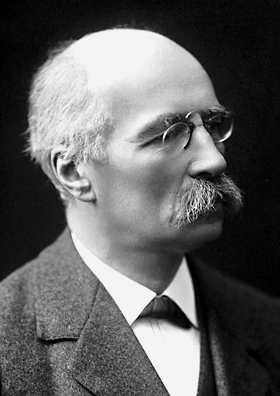Henri La Fontaine facts for kids
Quick facts for kids
Henri Marie La Fontaine
|
|
|---|---|

La Fontaine, c. 1914
|
|
| Born |
Henri Marie La Fontaine
22 April 1854 |
| Died | 14 May 1943 (aged 89) Brussels, Occupied Belgium
|
| Occupation | lawyer |
| Known for | Nobel Peace Prize (1913) |
Henri La Fontaine (born April 22, 1854 – died May 14, 1943) was a Belgian lawyer who worked for peace around the world. He was the president of the International Peace Bureau. In 1913, he received the Nobel Peace Prize because he was a very important leader in the peace movement in Europe.
Life and Work
Henri La Fontaine was born in Brussels, Belgium, on April 22, 1854. He studied law at the Free University of Brussels. In 1877, he became a lawyer. He became known as an expert in international law, which are the rules that guide how countries interact with each other.
Henri and his sister, Léonie La Fontaine, were early supporters of women's rights. They also believed women should have the right to vote, which is called suffrage. In 1890, they started the Belgian League for the Rights of Women to help achieve these goals.
In 1893, Henri La Fontaine became a professor of international law at the Free University of Brussels. Two years later, he was elected to the Belgian Senate. The Senate is a part of the country's government. He was a member of the Socialist Party. From 1919 to 1932, he served as the Senate's vice chairman.
La Fontaine became very interested in the International Peace Bureau, which was started in 1882. He helped the Bureau organize the important Hague Peace Conferences in 1899 and 1907. These conferences aimed to find ways to solve problems between countries peacefully. He was the president of the Bureau from 1907 until he passed away in 1943.
After World War I, La Fontaine believed that countries would create an international court to settle disagreements. He also worked to bring together different groups that supported peace around the world.
He was part of the Belgian group at the Paris Peace Conference in 1919. This conference helped decide what would happen after World War I. He also attended the League of Nations Assembly in 1920–21. The League of Nations was an organization created to promote world peace.
To help achieve peace, he started the Centre Intellectuel Mondial. This group later joined with the League of Nations Institute for Intellectual Co-operation. He also suggested ideas like a world school, a world university, and a world parliament. In 1907, he and Paul Otlet founded the Union of International Associations. He also helped create the Institut International de Bibliographie, which later became the International Federation for Information and Documentation.
Henri La Fontaine was a freemason, a member of a social and charitable organization called Les Amis Philanthropes in Brussels. He passed away on May 14, 1943, in Brussels.
Works
Henri La Fontaine wrote several books about law and peace. He also started a magazine called La Vie Internationale. Some of his important works include:
- Les droits et des obligations des entrepreneurs de travaux publics (1885)
- Traité de la contrefaçon (1888)
- Pasicrisie internationale (1902)
- Bibliographie de la Paix et de l'Arbitrage (1904)
See also
- In Spanish: Henri La Fontaine para niños
- List of peace activists

